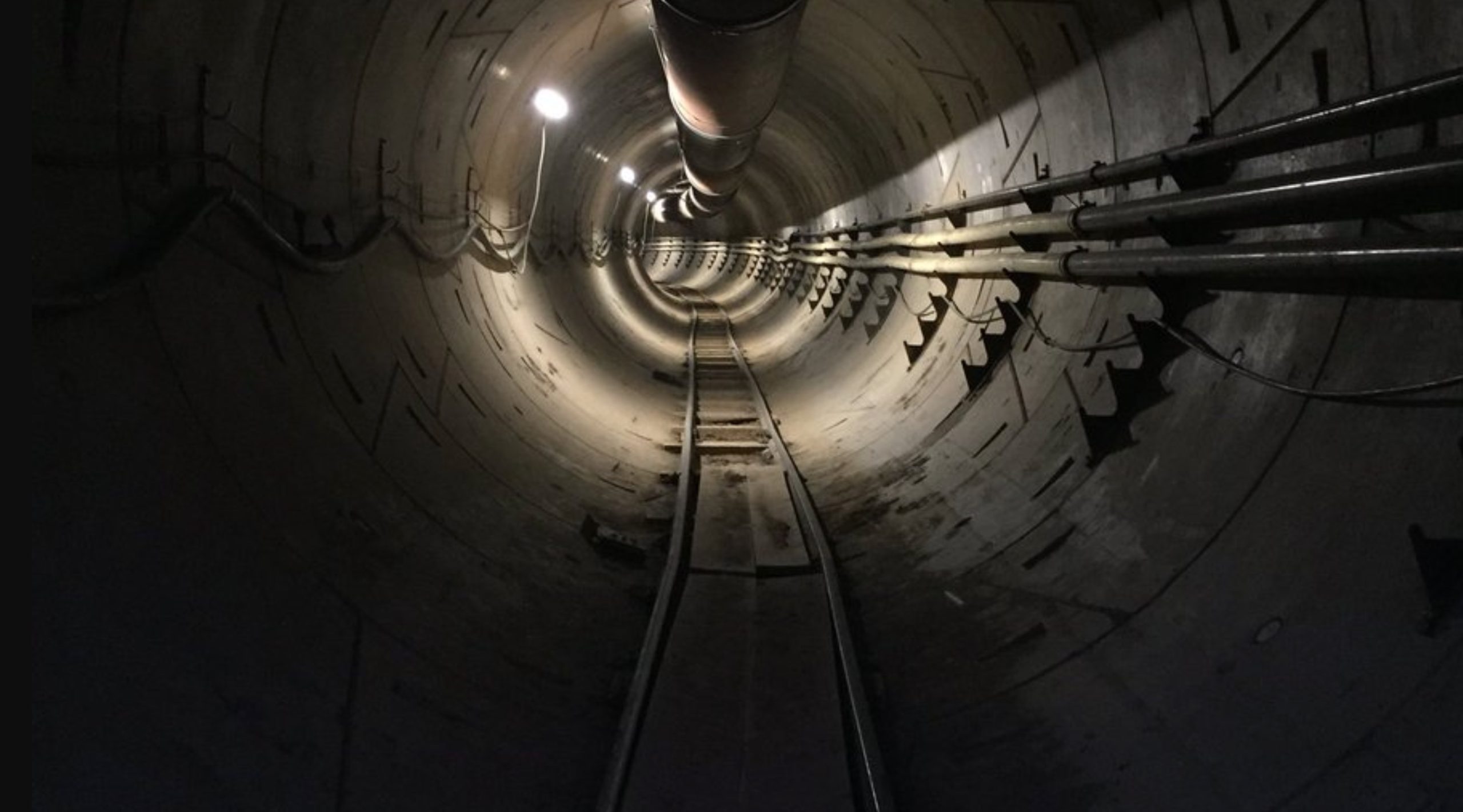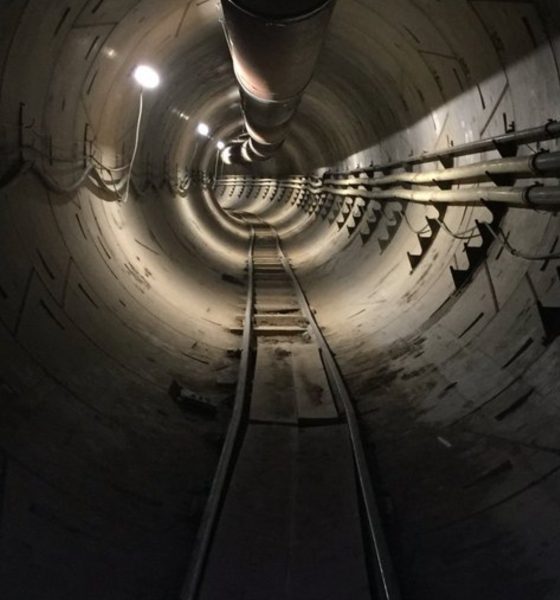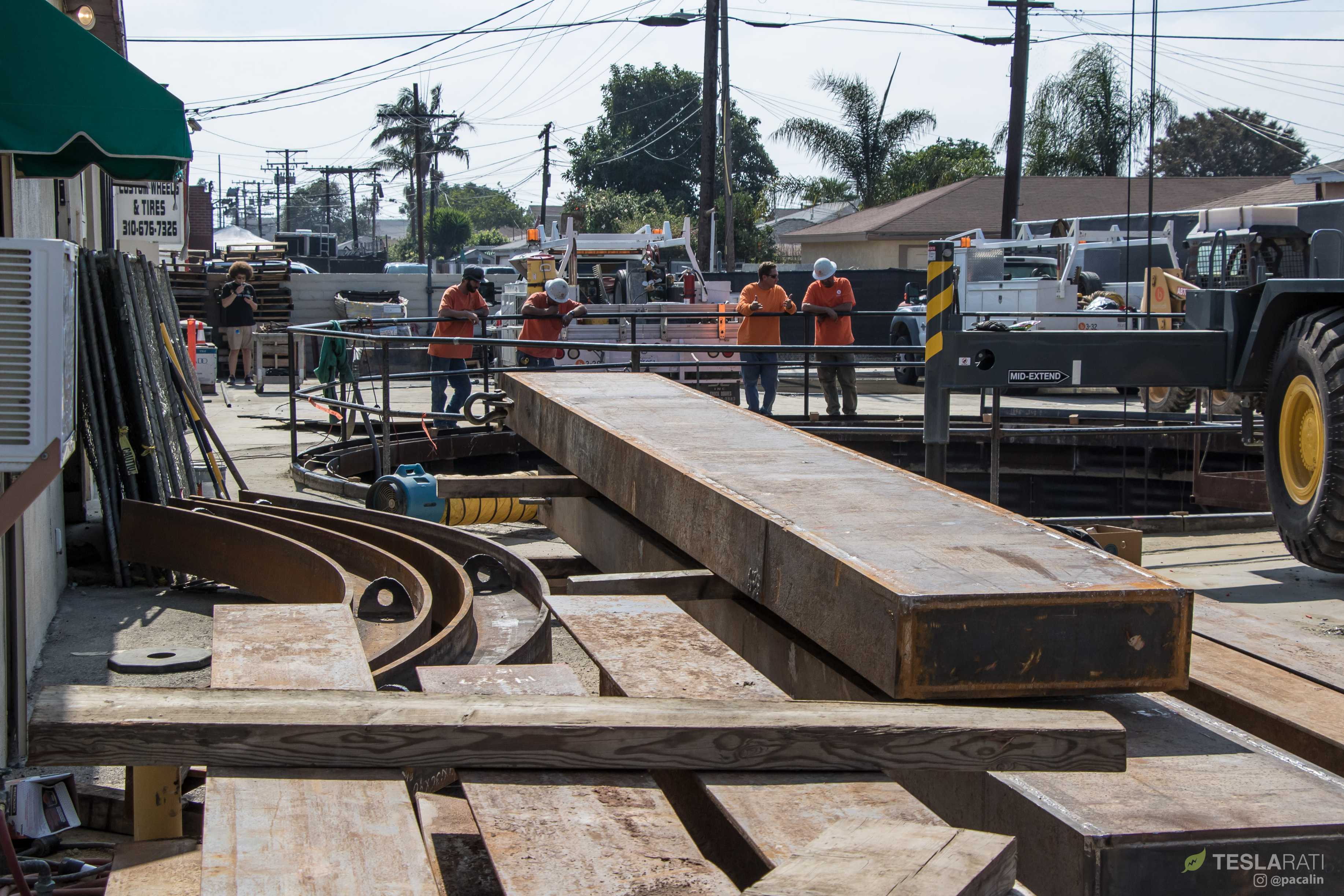

News
The Boring Company is open to building tunnels for utility lines, says Elon Musk
Concepts of The Boring Company’s futuristic, ultra-high-speed tunnels show a sleek system transporting passenger pods and private vehicles at speeds of around 124 mph (200 km/h). As revealed recently by Elon Musk during a “fireside chat” in Los Angeles, though, the tunneling startup is also open to building tunnels that are far less glamorous.
While addressing around 3,800 mayors and city officials from across the United States at the National League of Cities’ 2018 City Summit last week, Elon Musk stated that the Boring Company’s technology could be used to build tunnels for utility lines. Candidly conversing with LA Mayor Eric Garcetti, Musk noted that his tunneling startup would even take on projects like sewer lines in the future.
“The Boring Co. is also going to do tunneling for, like, water transport, sewage, electrical. We’re not going to turn our noses up at sewage tunnels. We’re happy to do that too,” Musk said.
The Boring Company is built on the premise that current tunneling technologies and techniques still have areas for improvement. Just by reducing the size of the tunnels themselves, for one, The Boring Company expects to reduce tunneling costs by a factor of four. Elon Musk has also mentioned that the company is designing and building an all-electric tunnel boring machine, which would be capable of digging 10-15 times faster than a traditional TBM. Being small, the Boring Company’s tunnels are also capable of maintaining a vacuum, making them capable of supporting Hyperloop transportation systems in the future.
Ultimately, using The Boring Company’s tech to build tunnels for utility lines could prove strategic for cities. In a statement to Forbes, Constantine Samaras, an associate professor of civil and environmental engineering at Carnegie Mellon University, noted that the Boring Company’s faster, cheaper, and smaller tunnels would likely be a big benefit to cities.
“A lot of these systems (power, water, communications, and sewer lines) are old and in bad shape. Often, fixing utilities means cutting open the street and disrupting traffic. If the Boring Co. can use their tunneling technology to make it faster and cheaper to install and upgrade underground utilities, it will be a big benefit to cities,” Samaras stated.

Elon Musk might have found the Boring Company’s first customer for its sewage tunneling services too. During his chat with Musk, LA Mayor Garcetti candidly asked the Tesla and SpaceX CEO if Los Angeles could get the first sewage tunnel from The Boring Company. Elon Musk answered in the affirmative.
As the Boring Company prepares its Hawthorne test tunnel for its public showing on December 10, the company is also hard at work building its prototype garage-elevator concept at a private lot in 120th Street and Prairie Avenue. Photographs taken by Teslarati photographers Pauline Acalin and Tom Cross indicate that the Boring Company is moving fast to complete its futuristic garage-elevator concept, while constructing what appears to be a gantry for the tunnel boring machine it would use for its high-profile high-speed tunnel project in Chicago.
The Boring Company has the potential to disrupt several industries. With its high-speed tunnels, the tunneling startup could usher in an alternative, sustainable, and more efficient way of transportation. The company also has the potential to disrupt the low-cost housing market thanks to the Boring Bricks, which Musk estimates would cost around 10 cents per brick.

News
Tesla aims to combat common Full Self-Driving problem with new patent
Tesla writes in the patent that its autonomous and semi-autonomous vehicles are heavily reliant on camera systems to navigate and interact with their environment.

Tesla is aiming to combat a common Full Self-Driving problem with a new patent.
One issue with Tesla’s vision-based approach is that sunlight glare can become a troublesome element of everyday travel. Full Self-Driving is certainly an amazing technology, but there are still things Tesla is aiming to figure out with its development.
Unfortunately, it is extremely difficult to get around this issue, and even humans need ways to combat it when they’re driving, as we commonly use sunglasses or sun visors to give us better visibility.
Cameras obviously do not have these ways to fight sunglare, but a new patent Tesla recently had published aims to fight this through a “glare shield.”
Tesla writes in the patent that its autonomous and semi-autonomous vehicles are heavily reliant on camera systems to navigate and interact with their environment.

The ability to see surroundings is crucial for accurate performance, and glare is one element of interference that has yet to be confronted.
Tesla described the patent, which will utilize “a textured surface composed of an array of micro-cones, or cone-shaped formations, which serve to scatter incident light in various directions, thereby reducing glare and improving camera vision.”

The patent was first spotted by Not a Tesla App.
The design of the micro-cones is the first element of the puzzle to fight the excess glare. The patent says they are “optimized in size, angle, and orientation to minimize Total Hemispherical Reflectance (THR) and reflection penalty, enhancing the camera’s ability to accurately interpret visual data.”
Additionally, there is an electromechanical system for dynamic orientation adjustment, which will allow the micro-cones to move based on the angle of external light sources.
This is not the only thing Tesla is mulling to resolve issues with sunlight glare, as it has also worked on two other ways to combat the problem. One thing the company has discussed is a direct photon count.
CEO Elon Musk said during the Q2 Earnings Call:
“We use an approach which is direct photon count. When you see a processed image, so the image that goes from the sort of photon counter — the silicon photon counter — that then goes through a digital signal processor or image signal processor, that’s normally what happens. And then the image that you see looks all washed out, because if you point the camera at the sun, the post-processing of the photon counting washes things out.”
Future Hardware iterations, like Hardware 5 and Hardware 6, could also integrate better solutions for the sunglare issue, such as neutral density filters or heated lenses, aiming to solve glare more effectively.
Elon Musk
Delaware Supreme Court reinstates Elon Musk’s 2018 Tesla CEO pay package
The unanimous decision criticized the prior total rescission as “improper and inequitable,” arguing that it left Musk uncompensated for six years of transformative leadership at Tesla.

The Delaware Supreme Court has overturned a lower court ruling, reinstating Elon Musk’s 2018 compensation package originally valued at $56 billion but now worth approximately $139 billion due to Tesla’s soaring stock price.
The unanimous decision criticized the prior total rescission as “improper and inequitable,” arguing that it left Musk uncompensated for six years of transformative leadership at Tesla. Musk quickly celebrated the outcome on X, stating that he felt “vindicated.” He also shared his gratitude to TSLA shareholders.
Delaware Supreme Court makes a decision
In a 49-page ruling Friday, the Delaware Supreme Court reversed Chancellor Kathaleen McCormick’s 2024 decision that voided the 2018 package over alleged board conflicts and inadequate shareholder disclosures. The high court acknowledged varying views on liability but agreed rescission was excessive, stating it “leaves Musk uncompensated for his time and efforts over a period of six years.”
The 2018 plan granted Musk options on about 304 million shares upon hitting aggressive milestones, all of which were achieved ahead of time. Shareholders overwhelmingly approved it initially in 2018 and ratified it once again in 2024 after the Delaware lower court struck it down. The case against Musk’s 2018 pay package was filed by plaintiff Richard Tornetta, who held just nine shares when the compensation plan was approved.
A hard-fought victory
As noted in a Reuters report, Tesla’s win avoids a potential $26 billion earnings hit from replacing the award at current prices. Tesla, now Texas-incorporated, had hedged with interim plans, including a November 2025 shareholder-approved package potentially worth $878 billion tied to Robotaxi and Optimus goals and other extremely aggressive operational milestones.
The saga surrounding Elon Musk’s 2018 pay package ultimately damaged Delaware’s corporate appeal, prompting a number of high-profile firms, such as Dropbox, Roblox, Trade Desk, and Coinbase, to follow Tesla’s exodus out of the state. What added more fuel to the issue was the fact that Tornetta’s legal team, following the lower court’s 2024 decision, demanded a fee request of more than $5.1 billion worth of TSLA stock, which was equal to an hourly rate of over $200,000.
Delaware Supreme Court Elon Musk 2018 Pay Package by Simon Alvarez
News
Tesla Cybercab tests are going on overdrive with production-ready units
Tesla is ramping its real-world tests of the Cybercab, with multiple sightings of the vehicle being reported across social media this week.

Tesla is ramping its real-world tests of the Cybercab, with multiple sightings of the autonomous two-seater being reported across social media this week. Based on videos of the vehicle that have been shared online, it appears that Cybercab tests are underway across multiple states.
Recent Cybercab sightings
Reports of Cybercab tests have ramped this week, with a vehicle that looked like a production-ready prototype being spotted at Apple’s Visitor Center in California. The vehicle in this sighting was interesting as it was equipped with a steering wheel. The vehicle also featured some changes to the design of its brake lights.
The Cybercab was also filmed testing at the Fremont factory’s test track, which also seemed to involve a vehicle that looked production-ready. This also seemed to be the case for a Cybercab that was spotted in Austin, Texas, which happened to be undergoing real-world tests. Overall, these sightings suggest that Cybercab testing is fully underway, and the vehicle is really moving towards production.
Production design all but finalized?
Recently, a near-production-ready Cybercab was showcased at Tesla’s Santana Row showroom in San Jose. The vehicle was equipped with frameless windows, dual windshield wipers, powered butterfly door struts, an extended front splitter, an updated lightbar, new wheel covers, and a license plate bracket. Interior updates include redesigned dash/door panels, refined seats with center cupholders, updated carpet, and what appeared to be improved legroom.
There seems to be a pretty good chance that the Cybercab’s design has been all but finalized, at least considering Elon Musk’s comments at the 2025 Annual Shareholder Meeting. During the event, Musk confirmed that the vehicle will enter production around April 2026, and its production targets will be quite ambitious.








